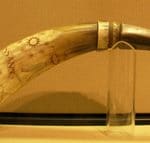The 28th in Australia
In February 1835 the 28th (North Gloucestershire) Regiment started its voyage from England, twenty-three ships in all, bound for New South Wales in Australia. Here they were to remain until 1842, when they left for India.
The 28th’s headquarters was at Parramatta, now a suburb of Sydney, but contingents were despatched elsewhere in New South Wales and Queensland, including Hassan’s Wells, Illawarra, Tonrang, Harper’s Hill, Enim Plain, Seventeen Mile Hollow, Newcastle, Maitland, Bloxland Station, Port Philip and Moreton Bay.
Australia proved to be quite congenial to some, and the Naval and Military Gazette of February 1838 reported that:
“The Officers of this [28th] Regiment have been less disgusted with banishment to New South Wales than others have been; for we observe that already a considerable portion have settled in the Colony, and twelve more are about to retire from service for that purpose.”
It was not just from amongst the officers of the 28th that new colonists were found for this outpost of Empire. Before the 28th left in 1842, all old soldiers with at least seventeen years service and being of good character were offered the chance of a year’s salary and 300 acres of land to settle in Australia. It was an opportunity that many could not turn down.
Recreational pursuits amongst the Regiment in Australia included putting on concerts and theatrical performances, and one popular hobby with the men was to produce scrimshaw work on powder horns, some of which survive today.
But there was serious and less congenial work to be undertaken. Convicts were employed in construction work, building roads and clearing forests, and they needed supervision. Sometimes, parties of soldiers were sent into the interior, to protect farmers and other settlers from the depredations of escaped criminals, the so-called bushrangers.
In 1839 one former convict, Frank “The Poet” MacNamara, wrote his own version of Dante’s Inferno, entitled “A Convict’s Tour to Hell”, condemning his guards and tormentors, including one Sergeant Flood of the 28th:
“…..
Then I saw old Sergeant Flood,
In Vulcan’s hottest forge he stood;
He gazed at me, his eyes with ire
Appeared like burning coals of fire.
In fiery garments he was arrayed
And like an Arabian horse he brayed;
He on a bloody cutlass leaned
And to a lamp-post he was chained.
He loudly called out for assistance
Or begged me to end his existence.
“Cheer up” said I, “be not afraid,
Remember No. Three Stockade.
In the course of time you may do well
If you behave yourself in Hell;
Your heart on earth was fraught with malice
Which oft drove convicts to the gallows,
But you’ll now atone for all the blood
Of prisoners shed by Sergeant Flood.
…..”
The departure of the 28th from Australia was not without incident. The three ships carrying the Regiment to Bombay all ran aground in a shallow bay behind a coral reef, and it took six days to get them out. Today, the reef which they so narrowly avoided is named Slasher’s Reef in the Regiment’s honour.
Picture: Sergeant Flood’s powder horn. Original in the Soldiers of Gloucestershire Museum.


